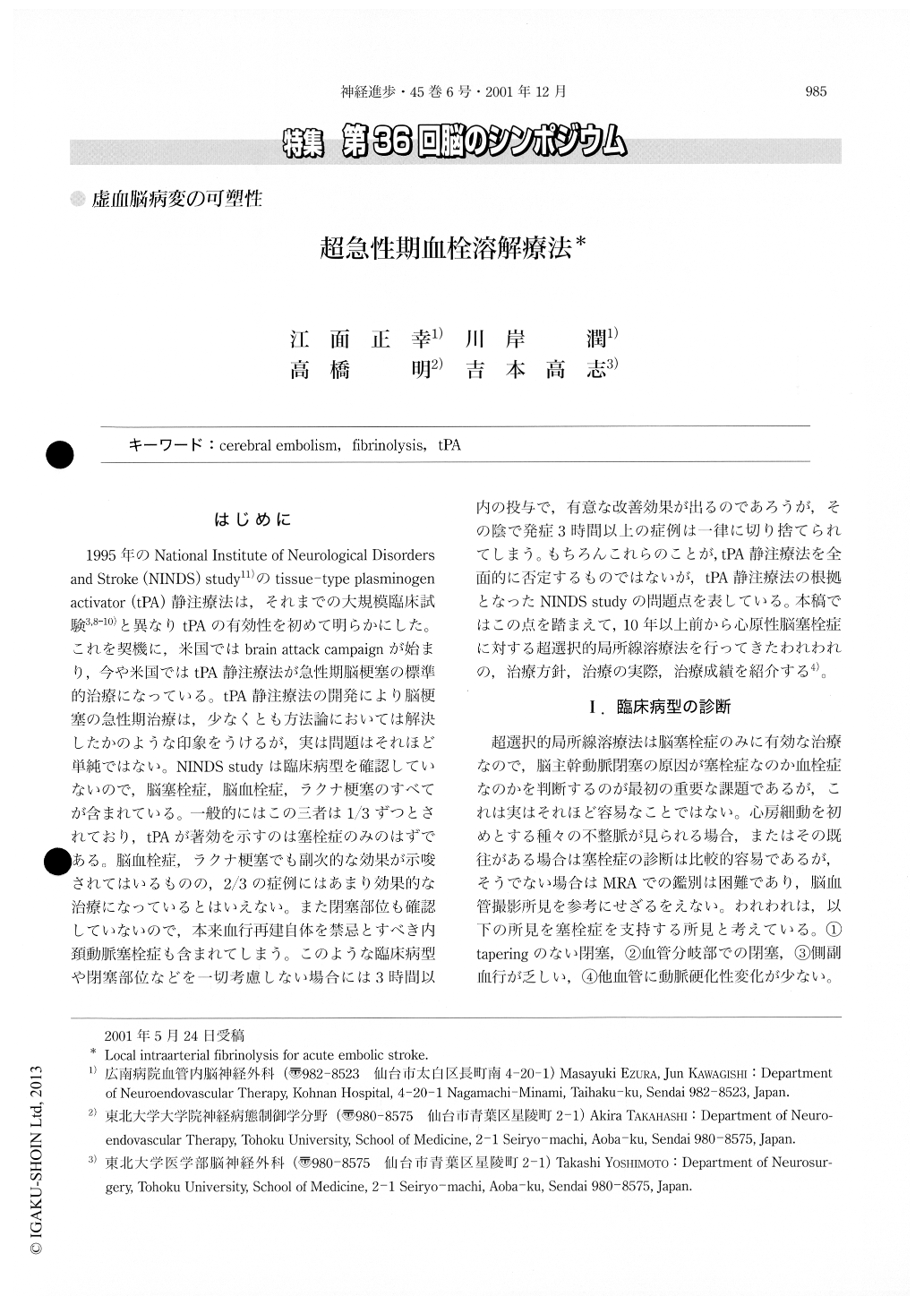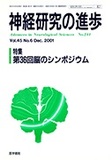Japanese
English
- 有料閲覧
- Abstract 文献概要
- 1ページ目 Look Inside
はじめに
1995年のNational Institute of Neurological Disordersand Stroke(NINDS)study11)のtissue-type plasminogenactivator(tPA)静注療法は,それまでの大規模臨床試験3,8-10)と異なりtPAの有効性を初めて明らかにした。これを契機に,米国ではbrain attack campaignが始まり,今や米国ではtPA静注療法が急性期脳梗塞の標準的治療になっている。tPA静注療法の開発により脳梗塞の急性期治療は,少なくとも方法論においては解決したかのような印象をうけるが,実は問題はそれほど単純ではない。NINDS studyは臨床病型を確認していないので,脳塞栓症,脳血栓症,ラクナ梗塞のすべてが含まれている。一般的にはこの三者は1/3ずつとされており,tPAが著効を示すのは塞栓症のみのはずである。脳血栓症,ラクナ梗塞でも副次的な効果が示唆されてはいるものの,2/3の症例にはあまり効果的な治療になっているとはいえない。また閉塞部位も確認していないので,本来血行再建自体を禁忌とすべき内頚動脈塞栓症も含まれてしまう。このような臨床病型や閉塞部位などを一切考慮しない場合には3時間以内の投与で,有意な改善効果が出るのであろうが,その陰で発症3時間以上の症例は一律に切り捨てられてしまう。
To evaluate superselective local intraarterial fibrinolysis (LIF) using tPA for acute embolic occlusion, 77 patients with middle cerebral artery (MCA) occlusion and 15 patients with basilar artery (BA) occlusion receiving LIF were investigated. The indication of this treatment includes : 1) within 6 hours after onset of symptoms, 2) no responsible lesions in CT findings, 3) less than 75-year-old. HMPAO SPECT was carried out, if possible. The supplementary indication in SPECT findings is : 4) residual flow in affected side is between 35 and 70% comparing contralateral side.

Copyright © 2001, Igaku-Shoin Ltd. All rights reserved.


